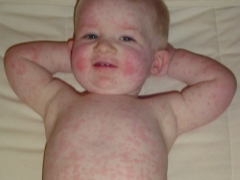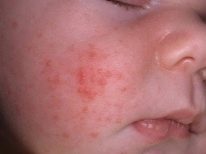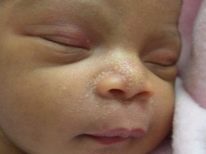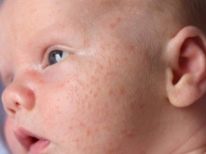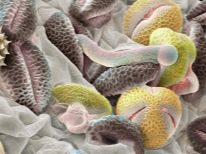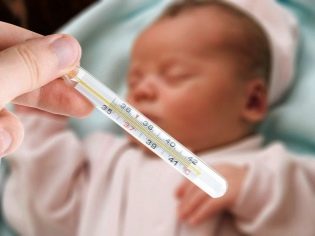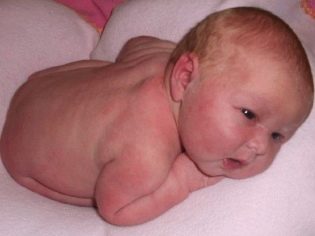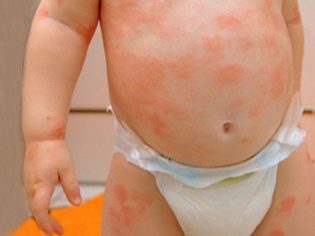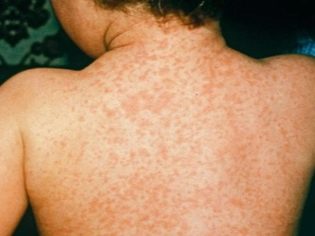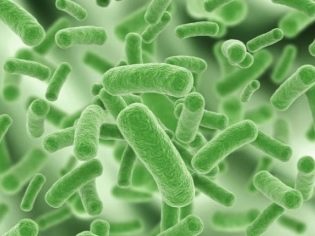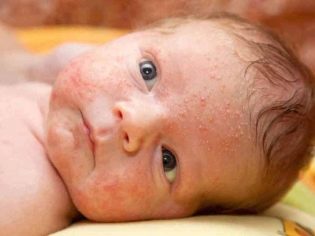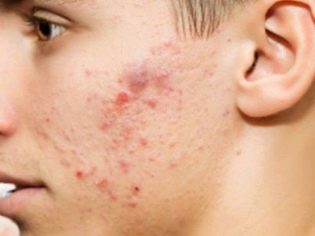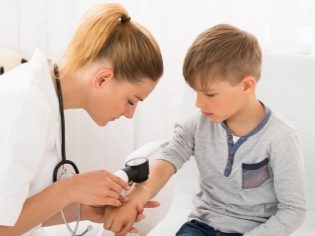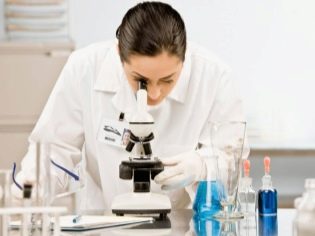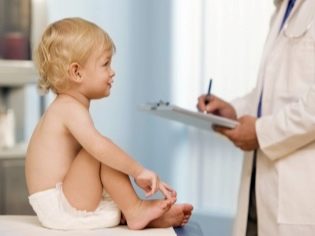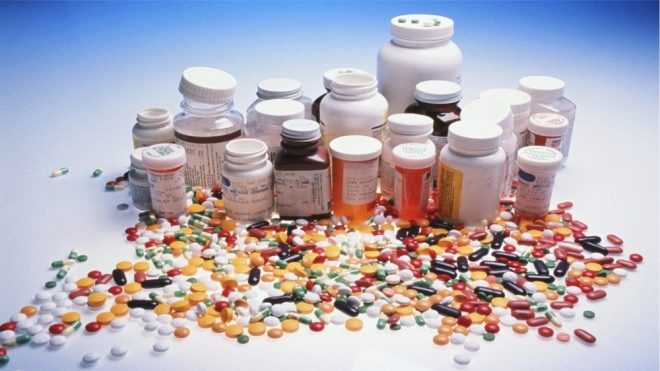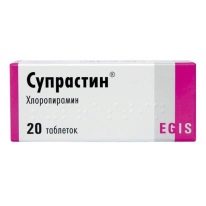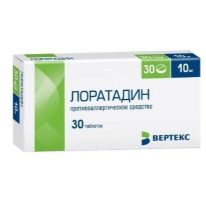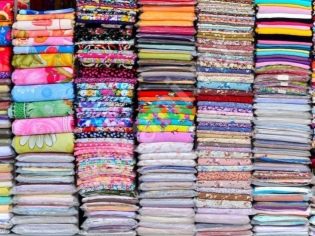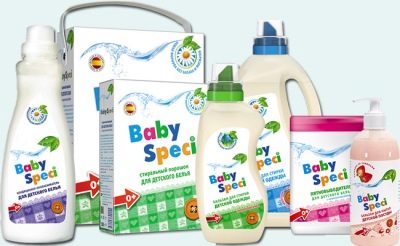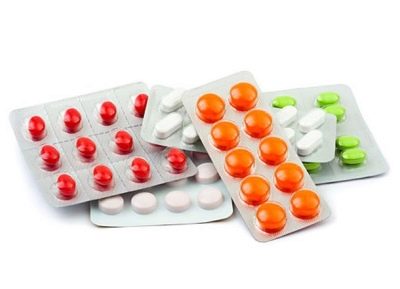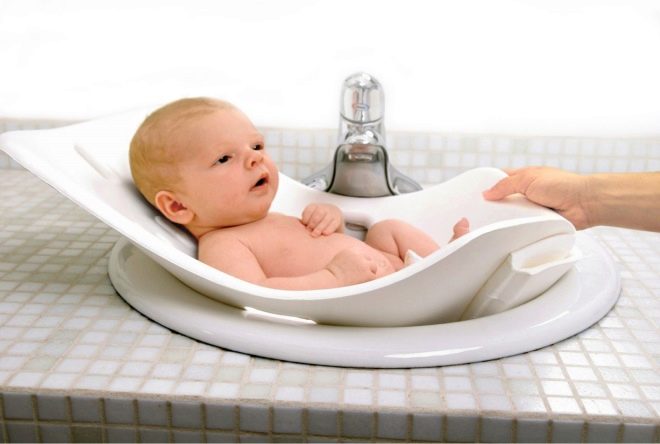What if there is a rash all over the child’s body, and there is no temperature?
Rash on healthy skin in a baby is often the result of the presence in the children's body of some kind of pathology. A rash over the entire body can appear in a baby without a high body temperature. This article describes the situations in which such a situation arises and how to help your baby.
Causes
A variety of causal factors can cause the appearance of various eruptions on the skin. The severity of clinical symptoms is different. Babies of infancy can carry the disease somewhat harder than older children. Also in most cases, the rash on their skin becomes generalized, that is, cover almost the entire body.
Doctors distinguish several clinical variants of eruptions that appear on the skin of babies, even in the absence of high temperature. So, in newborn babies, a skin rash can have quite physiological character.
Such rashes appear in the child due to the imperfect functioning of the endocrine system and the periodic increase in the level of hormones. This condition is completely temporary and disappears as the child grows.
Immunological causes lead to the fact that the skin of the baby begin to show various rashes. These include:
- irritating chemicals;
- provoking allergens of different origin;
- exposure to external factors (high ambient temperature, low humidity, intense exposure to ultraviolet rays, and others);
- mechanical pressure or friction.
These causes lead to the activation of immune cells, which are normally located in the layers of the skin and are necessary to protect the child's body from various infections. Activated cells begin to fight with allergens, which is manifested in the baby development immune inflammation. This condition can occur with both high and low body temperature.
Immune rash in most cases is accompanied by severe itching. This feature is due to the activation of specific immune cells that emit a huge amount of biologically active substances that are irritating to the skin. This condition leads to the fact that the child begins to heavily comb the damaged skin.
Different types of rashes also contribute to the appearance on the clean skin of the baby. multiple bacterial or viral diseases. They, as a rule, are rather easily transferred from a sick child to a healthy one. Children attending kindergarten or school, according to statistics, suffer from such infectious pathologies several times more often.
Infections often occur with fever. However, this is not always the case. In some babies, body temperature may be low or even remain within normal limits.
Many viral and bacterial infections also cause a child’s other adverse symptoms, and not just the appearance on the skin of pathological rash:
- A sick baby may experience soreness in the abdomen, general weakness, headache and rapid fatigue.
- Babies of early age often develop various disorders of the stool, which manifest as persistent constipation and diarrhea.
- A sick baby has a significantly reduced appetite. Babies may even refuse to breastfeed or poorly attached to the breast.
- The behavior of the sick child also changes. Such a baby becomes more withdrawn and nervous. He tries to avoid any active games.
- The sleep of the child is also significantly disturbed. The baby, as a rule, experiences severe daytime sleepiness, and wakes up many times during the night.
- The course of this condition can be significantly hampered by the appearance of a skin itch in a child.
What does it look like?
Skin rashes that appear in a child against a background of normal body temperature may manifest themselves in different ways.
Allergy
Allergic rash is usually red, small. The diameter of such skin rashes in most cases does not exceed 5-6 mm. Such red specks quite often merge with each other, forming elements with edges of an uneven or bizarre shape.
Skin with an allergic rash usually itch much. Pathological rash can appear on almost all parts of the body. When contact dermatitis Syphilic elements appear only in the places of direct exposure to the allergen.
Usually they look like multiple bright red spots that itch severely and cause severe discomfort in the child.
Bacterial infections
Some forms of bacterial infections are manifested by the appearance of not only a red rash on the skin, but also the appearance of multiple blisters. Inside these formations is bloody fluid.
The outer wall of these skin blisters is thin enough and can easily be injured when touched. This causes all liquid to flow out.
The peak of infectious diseases in children usually falls on age 2-5 years. At this time, the work of the immune system is still insufficiently formed, which leads to the fact that the child can easily become infected with any infection.
Prickly heat
The appearance of bright red specks behind the ears may indicate that the baby has had prickly heat. This condition most often develops in babies of infancy and is associated with excessive wrapping of babies. Wearing a too-warm wool hat can cause the baby to develop symptoms of prickly heat on the neck and face area.
Hormone imbalance
The appearance of ulcers on the skin of the back is often a manifestation of an imbalance of hormones. The development of this pathological condition, as a rule, leads to an increased level of testosterone.
Pustular rashes usually appear on the back, shoulders, face, and also on the upper half of the body. This condition develops. more often in adolescence.
Where to go?
The appearance of lesions on the skin is a mandatory reason for parents to show the child to the doctor. For the first treatment, it is quite enough to consult a pediatrician.. This doctor will conduct the necessary clinical examination and establish a presumptive diagnosis.
If conducting a differential diagnosis is quite complicated and requires special knowledge about skin diseases, then the pediatrician will refer the baby for consultation to a pediatric dermatologist.
To establish the correct diagnosis, all babies are carried out a whole range of different studies.
A general blood test can reveal even hidden signs of various infectious pathologies, and also gives doctors an idea of the severity of functional disorders. Even in the absence of high body temperature in a child, leukocytes and ESR can be elevated. These laboratory changes quite clearly indicate that certain pathologies develop in the children's organism.
In some cases, it is possible to identify the causative agent of the disease only by conducting special bacteriological studies.
These methods include scraping. The biological material for this test is the upper layers of the skin. A nurse in the laboratory takes them for research, and in some cases only a pediatric dermatologist. The readiness of the material is usually in 3-5 days from the moment of material collection.
To identify and differentiate various forms of allergic diseases are used various allergological tests. They allow you to determine whether the child has an individual hypersensitivity to some types of allergens. This test is conducted only by an immunologist.
This study gives doctors a fairly complete picture of how allergens a child has a strong sensitivity.
How is the treatment carried out?
After the diagnosis has been established, doctors prescribe complex therapy to the sick child. It can include a wide variety of drug combinations. The main goal of this treatment is to clear the skin from lesions and strengthen local immunity.
Selection of drugs is carried out taking into account the main cause of the disease, which caused the appearance of such adverse skin manifestations in a child. To eliminate the allergic rash are used drugs containing in its composition antihistamine components. Such tools not only cope with rashes, but also help to reduce skin itching.
To achieve the result usually requires at least 7-10 days of taking these drugs. The first positive effect, as a rule, is noticeable already for 2-3 days from the beginning of the use of drugs.
Antihistamine medicines can be produced in various forms of release. With a mild course of disease, use is sufficient. special ointments or creams. Such funds are perfectly distributed over the skin, are quickly absorbed and penetrate well into all skin layers. These drugs include: "Gistan N", "Fenistil gel" and many others. To use such drugs should be given the instructions on the package.
With systemic dissemination of skin elements, only local treatment is not enough. In this case, doctors recommend using tablet form medicines. These drugs include: "Suprastin", "Loratadine"," Zyrtec " and many others. They are appointed 1-2 times a day, mostly in the first half of the day.
If the child has a red skin rash as a result of overheating of the child, then the parents should definitely review the clothes they use for the baby. Do not overly wrap the child. To take walks on the street one should give preference to rather warm, but at the same time “breathing” clothes.
For kids, especially the first years of life, it is better to choose blouses or pants made of natural materials.
Red rash, manifested in babies in different parts of the body, can also be triggered various cosmetic products used for daily hygiene.
Particular attention to moms should be paid to lotions and body creams. Quite often, their composition includes various chemical fragrances and dyes, which cause the appearance of various allergic rashes on the delicate skin of a child.
Babies who have a tendency to develop skin forms of allergies should choose cosmetics that do not contain any aggressive ingredients.
It is better to limit the use of all products having a strong smell. Preference should be given to children's cosmetics, which is approved for use in newborn babies and has all the necessary certificates of quality and safety.
The same attention should be paid and selection of household chemicalsused for washing baby clothes. Unscrupulous manufacturers to enhance the detergent and otstiryvayuschih properties are added to such agents rather aggressive surface-active substances. Getting on the skin, these chemicals can cause a baby to have a bright red rash.
Choosing baby detergents should also be quite careful, be sure to monitor how the baby’s skin reacts to contact with the clothes washed in them.
The use of antibiotics plays an important role in the treatment of bacterial infections. They can be appointed from 3 to 10 days. A longer reception is possible only if the child has a rather severe course of the disease.
Selection of the necessary antibiotic, its course dosage and duration of treatment determined by the attending physician. To eliminate the adverse symptoms, drugs with a rather wide range of actions are used predominantly.
If the baby has a tendency to appear on the skin of any rash, doctors recommend using special creams with anti-inflammatory action. Such drugs not only relieve inflammation, but also have a fairly good moisturizing effect on the skin.
Using «Bepanten» may reduce various irritations on the skin of babies. It is necessary to apply this means after carrying out hygienic procedures.
In some clinical situations, doctors recommend reduce the duration of bathing baby. Babies with atopic dermatitis should not have long baths. This can only lead to excessive drying of the skin, which will further traumatize the skin and the massive spread of rashes on it.
After bathing the baby should not wipe the skin with a towel, just a little wet with them extra moisture.
Proper diet is an important basis for maintaining healthy skin. For babies of the first months of life, nature has invented a unique nutrition - mother's milk. This biological product contains all the necessary vitamins and trace elements, as well as food nutrients that can prevent many skin pathologies in children.
Older children should get enough quality protein. It is necessary for the full operation of their immune system.
Industrial sweets and chocolate should be reduced as much as possible in the children's menu. Frequent inclusion of such "snacks" in the diet only contributes to the appearance on the skin of various rashes, including those of allergic origin.
All about the rash in children will tell Dr. Komarovsky in the next video.
